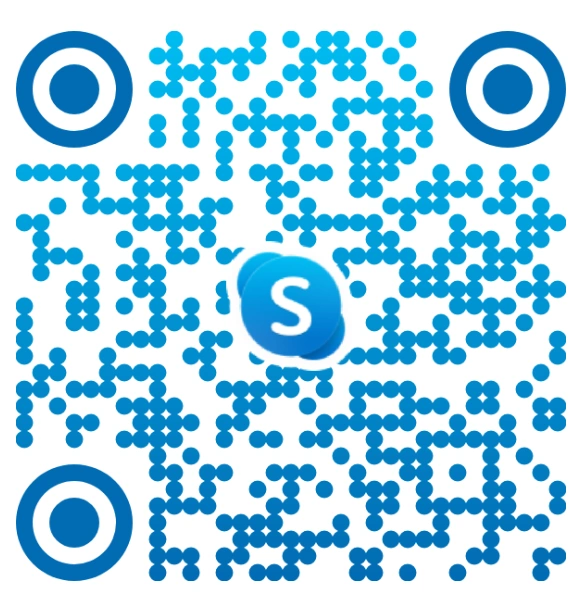LightRAG: Simplifying Retrieval-Augmented Generation for Scalable AI Solutions
Retrieval-Augmented Generation (RAG) is one of the most promising frameworks in the advancement of large language models (LLMs). By combining retrieval systems with generative models, RAG enables LLMs to access up-to-date, factual, and domain-specific knowledge. However, traditional RAG systems often struggle with high infrastructure costs, complex setup processes, and limited scalability. This is where LightRAG—a lightweight RAG model- comes in.
LightRAG, also known as RAGLite, is an open-source framework designed to offer simple and fast Retrieval-Augmented Generation with minimal compute overhead. Its modular structure and compatibility with leading tools like LlamaIndex, Ollama, and Neo4j make it an optimized RAG system for developers, researchers, and enterprises alike.
In this blog, we’ll explore how LightRAG compares to other frameworks like GraphRAG, its integration with LLMs and vector databases, and why it’s quickly becoming a go-to cost-efficient retrieval pipeline for building scalable AI solutions.
What is RAGLite?
LightRAG is a minimal compute RAG framework created to simplify retrieval-augmented generation. It’s built to be fast, easy to use, and compatible with modern AI stacks. Unlike traditional systems, LightRAG separates the retrieval and generation layers, which allows flexibility in selecting or switching tools.
It enables language models with external memory, giving them access to external documents in real time, without needing constant fine-tuning or costly retraining.
1. Key Components
RAGLite functions through three core components that collaboratively deliver accurate and context-aware responses. These components are:
- Retriever: Searches the most relevant pieces of information based on a user query.
- Reranker: Sorts or filters the retrieved documents to increase answer accuracy.
- Generator: A large language model (LLM) that composes a final answer based on the top results.
Each component is modular and interchangeable, which simplifies experimentation and deployment.
2. How RAGLite Differs from Traditional RAG
While both systems aim to enhance generation with retrieval, RAGLite sets itself apart through greater simplicity, flexibility, and accessibility. The table below outlines the key differences:
| Feature | Traditional RAG | LightRAG (RAGLite) |
| Deployment Complexity | High | Minimal |
| Hardware Requirements | GPU-heavy | CPU-friendly |
| Flexibility | Often tightly coupled | Fully modular |
| Reranking | Rare | Built-in or optional |
| Open-source Accessibility | Limited | Fully open and community-driven |
Why LightRAG Matters for Scalable AI
LightRAG stands out as a powerful solution for scalable AI due to its lightweight architecture, making it easy to deploy without heavy hardware dependencies. Designed with modularity and flexibility in mind, it allows seamless integration into various workflows and technology stacks. Its efficient design is particularly beneficial for resource-constrained environments where GPU access is limited, enabling robust performance even on CPUs. Furthermore, LightRAG supports both cloud and edge deployment scenarios, making it a future-ready choice for distributed AI applications. As part of modern enterprise solutions, LightRAG offers the efficiency, adaptability, and accessibility needed to scale AI across diverse use cases.
How LightRAG Simplifies Scalable Retrieval-Augmented AI Solutions
LightRAG simplifies RAG deployment with its modular, lightweight design, enabling faster builds, cleaner pipelines, and scalable AI without GPUs. Here’s how it delivers value across key areas:
1. Accelerating Time-to-Value in AI Applications
With LightRAG, teams can rapidly build and deploy intelligent systems without complex architectural overhead. Its simple setup reduces development time, enabling MVPs and pilot projects to launch in days rather than weeks.
2. Simplifying Complex Data Pipelines
Conventional RAG pipelines often involve tightly coupled retrieval and generation components. LightRAG introduces a clean separation of concerns, making it easier to maintain, debug, and upgrade individual modules as needed.
3. Enabling Real-Time, Context-Aware Responses
LightRAG supports access to up-to-date, domain-specific data, ensuring responses remain relevant and accurate. This is particularly vital in data-sensitive sectors like healthcare, legal, and finance, where real-time accuracy is non-negotiable.
4. Lowering Barriers to Enterprise-Ready AI
By running efficiently on CPUs and lightweight infrastructure, LightRAG eliminates the need for costly GPU clusters. This allows enterprises to scale AI initiatives across cloud and edge environments without incurring high operational costs.
5. Supporting Cloud and Edge Deployment at Scale
Designed for deployment flexibility, LightRAG works seamlessly across cloud, edge, and hybrid systems. Its open-source nature and minimal resource demands make it well-suited for distributed, scalable AI business integration.
Also Read : Chain-of-RAG: Multi-Step AI Business Solutions
Step-by-Step Implementation Guide
Getting started with LightRAG is straightforward, thanks to its minimal setup and modular architecture. Below is a step-by-step guide to help you install, configure, and run LightRAG for your use case—whether you’re testing locally or deploying at scale.
1. Repository Setup and Dependencies
Begin by cloning the LightRAG GitHub repository. Install the required dependencies using pip or a provided requirements.txt file. Most dependencies are lightweight and CPU-compatible, making the setup smooth even on modest hardware.
2. Preparing the Knowledge Base
Next, prepare your knowledge base by uploading structured or unstructured documents (e.g., PDFs, text files, or web pages). LightRAG supports various ingestion methods and can integrate with vector databases like FAISS or Chroma for document retrieval.
3. Running the Pipeline
Execute the end-to-end RAG pipeline using default scripts or command-line arguments. The retriever fetches relevant content, the reranker refines results, and the generator composes a final, context-aware response. Run this locally, deploy via a container, or hire AI developers to handle setup efficiently.
4. Customization Tips
To tailor LightRAG to your domain, adjust retriever parameters, fine-tune ranking logic, or swap out the generator model. Since the components are decoupled, you can experiment freely without breaking the entire pipeline.
5. Sample Output Flow
After successful execution, LightRAG will return responses with traceable context, highlighting which documents were retrieved and how they influenced the final output. This transparency aids debugging and builds trust in generated results.
Benefits of RAGLite
LightRAG offers a compelling set of advantages for teams and AI agent development companies looking to build efficient, scalable, and accessible Retrieval-Augmented Generation systems. From performance gains to developer usability, here are the key benefits that make LightRAG stand out:
- Lower Latency and Faster Inference: LightRAG dramatically reduces the time between input and output, thanks to its efficient design. Whether it’s integrated into a chatbot or a business tool, the response times remain snappy.
- Reduced Resource Consumption: Unlike traditional models that require GPUs or expensive APIs, LightRAG is optimized to run on lower-end machines, making it a cost-efficient retrieval pipeline.
- Improved Retrieval Quality via Reranking: With optional reranking modules, LightRAG improves output quality without drastically increasing computation time.
- Developer-Friendly Configuration: The framework is designed with developers in mind. Configurations are straightforward, and the pipeline is easy to understand, extend, and deploy.
- Seamless Plug-in for LLM Pipelines: Whether you’re using OpenAI’s GPT models, Ollama for local inference, or open-weight alternatives, LightRAG fits in with minimal adjustment.
Use Cases of LightRAG
LightRAG supports real-world industrial use with its lightweight and modular design. Here are five key applications:
- Customer Support Automation: Used in e-commerce and telecom to retrieve accurate responses from knowledge bases, reducing ticket volume and improving response speed.
- Enterprise Knowledge Management: Helps employees in manufacturing, logistics, and insurance quickly access SOPs, policies, and internal docs via natural language queries.
- Legal and Healthcare Summarization: Summarizes large case files or patient records, saving time and improving accuracy in decision-making.
- Edge-AI for Industrial IoT: Runs on local devices in factories or warehouses to process maintenance logs and guide real-time operations without cloud reliance.
- Research and Prototyping: Enables fast experimentation with RAG pipelines in sectors like pharma, automotive, and aerospace R&D.
Also Read : Agentic RAG: Smarter Goal Driven AI Solutions for Your Business
What’s Next for LightRAG
As adoption grows, LightRAG is expected to evolve with enhanced capabilities that meet the demands of increasingly complex use cases. One key area of development is multimodal retrieval—integrating images, audio, and structured data alongside text to enable richer, more context-aware responses. This will unlock new possibilities in fields like medical diagnostics, legal discovery, and technical support.
Additionally, the open-source community is actively shaping the roadmap by contributing extensions, plugins, and custom modules. Future versions may feature tighter integration with vector databases, improved reranking strategies, and more intuitive UIs for non-technical users. With a strong focus on accessibility and extensibility, LightRAG is well-positioned to remain a go-to solution for scalable, domain-adapted RAG pipelines.
Why Amplework is Your Ideal Partner for RAG-Based AI Solutions
Amplework is a popular AI consulting services provider that brings deep expertise in building scalable, efficient RAG-based AI solutions tailored to real business needs. With hands-on experience in LightRAG, GraphRAG, LlamaIndex, and databases like Neo4j, our team helps organizations transform unstructured data into actionable intelligence. We design systems that are fast, flexible, and easy to maintain, enabling you to launch AI-powered features without getting buried in complexity.
From architecting low-latency pipelines to optimizing cost across deployment environments, Amplework supports you through the full development lifecycle. Whether you’re embedding RAG into a product or building an internal knowledge platform, we provide seamless third-party tool integration, custom fine-tuning, and reliable post-deployment maintenance. Our approach simplifies RAG adoption, ensuring it delivers real, scalable value from day one.
Conclusion
LightRAG offers a refreshing approach to Retrieval-Augmented Generation—lightweight, modular, and practical for real-world use. It removes the complexity often associated with traditional RAG systems, making it easier to build fast, context-aware AI applications that scale.
Its flexibility, compatibility with open-source tools, and support for low-resource environments make it a smart choice for teams seeking cost-efficient retrieval pipelines. Whether used for chatbots, document summarization, or internal knowledge tools, LightRAG delivers on performance without overloading your infrastructure.
For teams looking to integrate RAG frameworks like LightRAG into production workflows, working with experienced implementation partners can streamline the journey. A well-structured deployment ensures you get the most out of lightweight RAG models, without the usual overhead.
FAQ
What is LightRAG?
LightRAG is a lightweight, open-source retrieval-augmented generation (RAG) framework designed for fast, low-latency AI solutions. It enables large language models to access external data using a simple, modular pipeline with minimal compute requirements.
How does LightRAG differ from traditional RAG systems?
Unlike traditional RAG setups, LightRAG uses a modular architecture, requires less infrastructure, and supports faster deployment. It avoids complex dependencies and delivers efficient performance, making it ideal for scalable, cost-efficient retrieval-based AI applications.
What are the core components of LightRAG?
LightRAG includes three key components: a retriever for fetching relevant documents, a reranker to prioritize high-quality context, and a generator (LLM) that produces responses based on the selected documents, working together as a lightweight RAG pipeline.
Can LightRAG run on limited hardware?
Yes, LightRAG is designed for minimal compute environments. It works well on CPUs and edge devices, allowing developers to deploy retrieval-augmented generation even in resource-constrained setups without requiring expensive GPU infrastructure.
Does LightRAG support open-source tools?
LightRAG integrates seamlessly with open-source ecosystems, including LlamaIndex, Neo4j, LangChain, and Ollama. This makes it flexible and customizable for developers looking to build their own retrieval-augmented generation workflows using familiar, community-supported tools.
What are typical use cases for LightRAG?
LightRAG is used in customer support chatbots, enterprise knowledge assistants, document summarization tools, and real-time semantic search systems. It also supports edge-AI applications in industries like healthcare, IoT, and finance with lightweight deployment needs.
Is LightRAG suitable for enterprise-scale AI applications?
Yes, LightRAG is scalable for enterprise use. Its modular design supports integration with large knowledge bases, offers reranking for precision, and ensures cost-effective retrieval pipelines that can adapt to business-specific use cases and data volumes.
How easy is it to implement LightRAG?
LightRAG is developer-friendly. With clear documentation and a modular setup, users can prepare a knowledge base, configure components, and launch a working pipeline quickly. It’s ideal for teams seeking a simple, production-ready RAG implementation.
Does LightRAG support reranking for better accuracy?
Yes, LightRAG includes an optional reranking module. It refines the order of retrieved documents to improve relevance, ensuring that the language model generates more accurate, context-aware answers based on high-quality information.
Is LightRAG free and open source?
Yes, LightRAG is completely free and open source. It’s available on GitHub, allowing anyone to explore, contribute, and customize it to suit their project needs across various industries and use cases.


 sales@amplework.com
sales@amplework.com
 (+91) 9636-962-228
(+91) 9636-962-228





